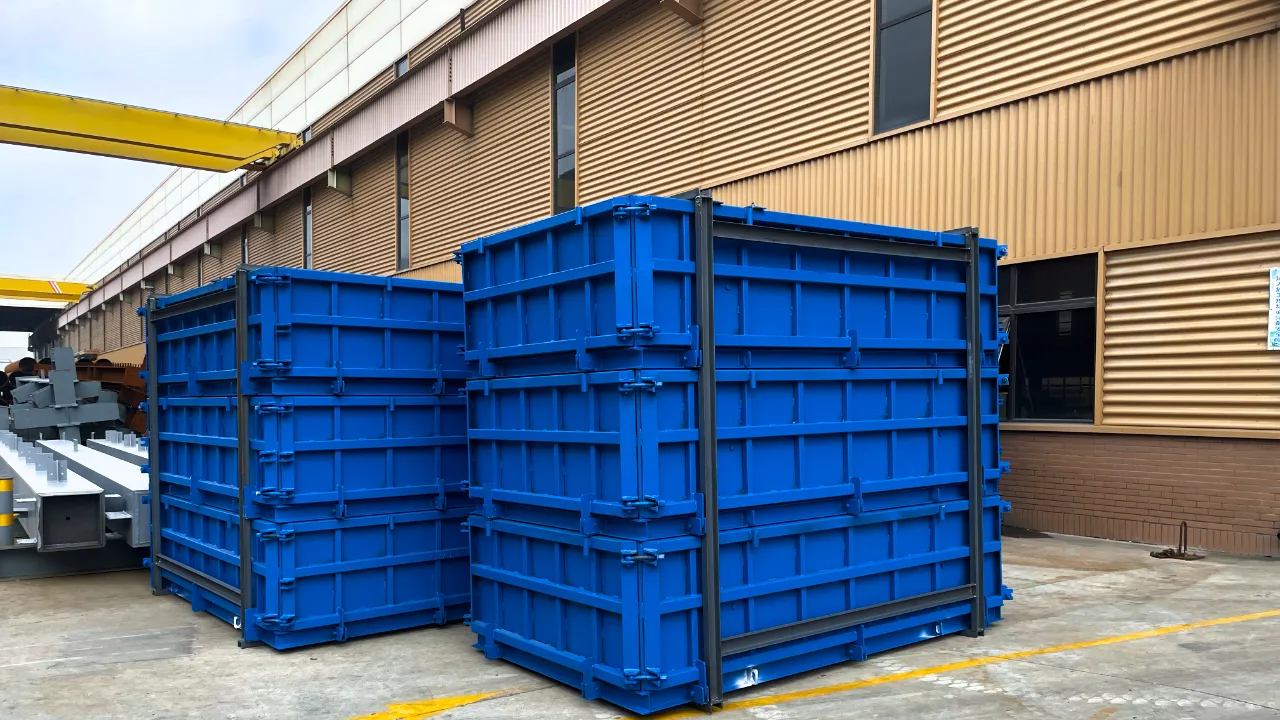Steel formwork for a foundation pier is a reusable mold made of steel plates and stiffeners, designed to shape and support the fresh concrete of a pier (vertical foundation element) until it gains enough strength to be self-supporting.
Structure & Components
A typical steel pier formwork system includes:
|
Component |
Description |
|---|---|
|
Steel panels |
Curved plates forming the pier’s cylindrical or rectangular shape. |
|
Ribs/stiffeners |
Horizontal and vertical steel bars welded to the panels for rigidity. |
|
Bolted or clamped joints |
Connect multiple panel sections together. |
|
Base ring/plate |
Ensures correct alignment with foundation footing. |
|
Lifting lugs |
For crane handling. |
Key Features
-
Material: Usually Q235/Q355 mild steel, 3–6 mm thick panels.
-
Shape options: Circular, square, or polygonal.
-
Height: Usually made in modular segments (e.g., 1.2–2.4 m) for stacking.
-
Assembly: Sections bolted or clamped on site for easy installation and removal.
-
Surface treatment: Painted or galvanized to resist rust.
Advantages
-
High durability: Reusable many times.
-
High precision: Maintains exact pier dimensions.
-
Smooth finish: Reduces plastering or grinding work.
-
Fast assembly/disassembly: Improves project efficiency.
Applications
-
Bridge piers
-
Building foundation piers
-
Transmission tower foundations
-
Marine and port pier columns
Typical Installation Steps
-
Prepare foundation footing: Ensure leveling and anchor positioning.
-
Assemble formwork sections: Bolt/clamp panels around pier rebar cage.
-
Align & secure: Use plumb lines, scaffolding, or bracing.
-
Pour concrete: Usually in layers to control pressure.
-
Curing period: Keep formwork in place until concrete reaches required strength.
-
Strip formwork: Use lifting lugs and crane, clean for reuse.


